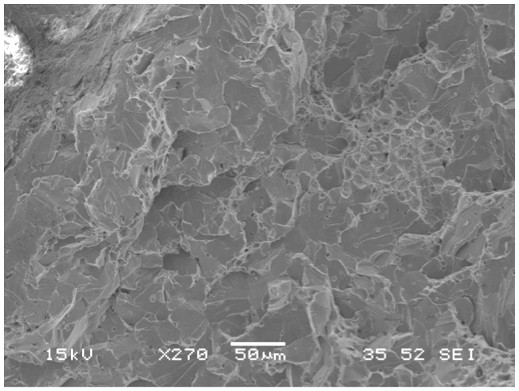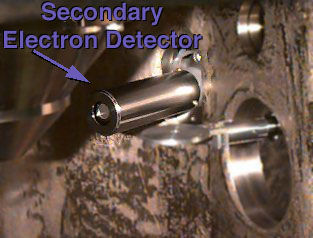Secondary electrons are specimen electrons that obtain energy by inelastic collisions with beam electrons. They are defined as electrons emitted from the specimen with energy less than 50ev.
An electron detector is used with the SEM to convert the radiation of interest into an electrical signal for manipulation and display by signal processing electronics, which to you and me is much like a television. Most SEM’s are equipped with an Everhart-Thornley (E-T) detector. It works in the following manner:
The scintillator material is struck by an energetic electron. This collision produces photons which are conducted by total internal reflection in a light guide to a photomultiplier. These photons are now in the form of light so they can pass through a vacuum environment and a quartz glass window. The photon is then converted back into an electron current where a positive bias can attract the electrons and collect them so that they will be detected.
 |
This is an image of the broken surface of a piece of metal, formed using secondary electron imaging. |
